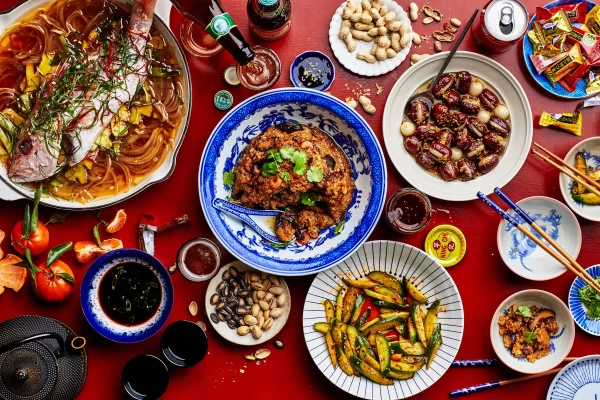Growing up in America, as a Chinese immigrant, many different cuisines have yet to meet the “New World’s” eyes. Over the years, additional Chinese dishes from other regions of China have been popularized and more commonly eaten in America. However, so many unique dishes still have yet to be discovered abroad. Many Chinese holidays are celebrated with food. Food is most commonly used to unite families and share each dish’s taste and history. The history behind each dish gives these dishes more meaning as well.
One typical dish that many Chinese families tend to make during the Lantern Festival is Tangyuan. It can be eaten sweetly or savory, depending on where your region is located or what different families prefer. Usually, it’s more popularly eaten sweet. So, what is Tangyuan? Tang Yuan is a traditional Chinese dish with glutinous rice shaped into balls. They’re usually stuffed with fillings ranging from black sesame paste to peanuts. When served, it is generally served along with hot milk broth or syrup. The savory version of Tangyuan is more common in the southern region of China. It’s typically empty glutinous rice balls cooked with different veggies and meats. Growing up, my grandma made savory Tangyuan with white radish, chicken, mushrooms, Chinese sausage, dried shrimp, and seaweed. But it all depends on the family. The dish symbolizes togetherness and family reunion since it’s usually eaten with loved ones.
Another dish I grew up eating that isn’t as popular in the States is clay pot rice. More commonly eaten in southern China and Hong Kong, it is made in a clay pot with rice and Chinese sausage or cured meat placed on it and then cooked over fire. Cooking rice this way gives the rice a crispy bottom. It’s usually enjoyed with soy sauce laid on top for more flavor in the rice.
Luosifen is a very popular dish in China that usually has mixed reviews. It is translated to the name, “Snail Rice Noodles,” a rice noodle dish made with river snails. The snails are only used to make the broth. The dish is usually served with pickled bamboo shoots, pickled green beans, shredded wood ear, fu zhu, fresh green vegetables, and peanuts. The smell of this dish is what turns some people away. The pungent smell from the pickled bamboo shoots affects men more than women. Luosifen is commonly found in, “hole-in-the-wall,” shops in China. Currently, three legends explain the upcoming Luosifen. One of these legends stated that some starving tourists traveled to Liuzhou in the evening and came across a closed rice noodle restaurant; however, the owner still served them. The bone soup, usually the main soup, was out of order, and only snail soup was available. The owner poured cooked rice noodles into the snail soup and served the tourists with vegetables, peanuts, and a bean curd stick side dish. No one knows the true story of this dish, but I believe it’s a very flavorful dish and that one should try it at least once in their lifetime.
Mah Lai Goh is a famous dessert cake commonly found in southern China. There are currently three guesses on how this dish originated. One of them is that Malay sponge cake developed from a British dessert and was then taken back to China by Chinese immigration. Whatever the story may be, it’s a famous dish usually eaten in teahouses now. Because of its popularity, it was even listed as the “national cake” in Hong Kong. Mah Lai Goh is traditionally made with levain, flour, white sugar, and eggs. The cakes would be steamed and served in a bamboo steamer.
With so many new dishes that are still unpopular, we as Americans can grow and learn about the culture and tastes of China, which is not as well known.

Isa Zapata
